New to our Juicing on a Budget series? Start here.
Guess what?! I’m talking about juicing again. I know. I’m on a serious kick here. I’ve never thought this much about kale and grapefruit before in my life. In my defense, however, I did test this out for over three months to make sure I was a true believer. I’m definitely walking a thin line between believer and nut. So, let’s just dive in together.
After last week’s post, I received several questions about the difference between high-powered blenders, like the Vitamix, and juicers. I seriously debated between the two myself. I opted for the juicer for two reasons: cost and purpose. My Breville juicer, while limited to just one function, fit my budget better.
Also, after testing out my parent’s juicer, I found that a juice can pack more of a produce punch per ounce than a smoothie. This might not be true for everyone, but my body has responded better to juices than it ever did to smoothies. I think it just comes down to the quantity of raw fruits & vegetables per glass.
For example, in one 16-ounce raw juice, I can get 1 apple, 5 carrots, 3 celery stalks, 1/2 lemon, and a piece of ginger. I personally prefer the consistency of drinking this as a juice vs. a smoothie.
Could I eat all of that on a plate and get the benefit of the fiber? Yes. Would I? Not likely. By drinking one raw juice a day, I can gain the benefits of all of that produce, as well as eating other fruits & vegetables. Juicing has easily tripled my daily fruit & vegetable intake.
If you are the happy owner of a Vitamix (or similar machine), I will stifle my envy long enough to say: If it ain’t broke, don’t fix it. If you love your smoothies or are straining them to make juices, then blend away! You own a high quality, versatile machine.
For more on this topic, you could check out online forums. There are pros and cons on both sides. I think it’s just one of those personal preference things.
If you go the juicing route, here are a few things I’ve learned. The first step is to wash and prep all fruits and vegetables you are planning to use. I pile them onto a rimmed baking sheet. I have never followed an official juice recipe before, but there are tons out there. Check out websites or the library for recipe resources (Two books I found helpful were The Big Book of Juices and Smoothies: 365 Natural Blends for Health and Vitality Every Day and Power Juices: A Pyramid Health Paperback (Pyramid Health Paperbacks)
— Amazon).
While it is tempting to stick with the sweet fruit juices, my goal is to hit around 30% fruit and 70% vegetables in each juice. It is still super tasty, but I am getting the benefit of the vegetables, many that I wouldn’t work into my daily diet otherwise.
When you start juicing regularly, you will figure out what flavor combinations taste good together. It is faster to go by personal preference and cheaper to go by what is in season and on sale, anyway.
Go easy on the stronger flavors. A little goes a long way. Mustard greens, beets, bell peppers, and ginger are all good candidates for smaller amounts.
Try juicing by color. I usually mix & match to get a higher ratio of vegetables to fruit, but every now and then I like to juice by color. The final color & flavor are nice and bright.
Reds & Purples: beets, chard, berries, grapes, apples
Greens: kale, spinach, cabbage, apples, celery, cucumbers, broccoli, parsley, lime
Yellows & Oranges: pineapple, oranges, carrots, apples, grapefruit, lemon, ginger
Add a kick. Maybe this is a personal preference, but I think all juice tastes better when it has some zing to it. Try adding a little ginger, bell peppers, citrus fruit, or cranberries to your juice.
Next, you press the fruits & vegetables down the feed tube.
My centrifugal juicer has two settings: low for softer fruit and high for harder produce in order to get as much juice out of them as possible. The juice pours into the container on the right, and the pulp spins into the container on the left.
Last week, I talked about how one of my main objections to juicing was losing all that fiber from the pulp. I have realized, though, that I can have my fruits & vegetables and drink them, too. I still get plenty of fiber by eating raw produce at other meals.
Also, perhaps the best benefit of juicing is that all those nutrients — vitamins, minerals, antioxidants, chlorophyll, etc. are delivered much faster to your body in liquid form. Natalie Savona writes in The Big Book of Juices and Smoothies: 365 Natural Blends for Health and Vitality Every Day (Amazon):
“Juices provide nutrients at top speed – our bodies absorb their goodness with maximum efficiency, unhindered by any need to break down and digest bulkier foodstuffs. The lack of any fiber (left behind in the juicing process) means that our bodies can assimilate the nutrients from a juice in a matter of minutes rather than hours.”
The dry pulp can be composted or used for other purposes. I have yet to do this step, but I know people who slip it into muffins or meatloaf. I’m so curious about Tami’s cracker recipe (see comments section from Juicing on a Budget, Part 1). Definitely on my list of things-to-try soon.
I don’t own any pets, but I’m also curious if animals like dogs or chickens would eat this mixed in with their regular feed? Any animal lovers have an opinion on this one?
Some of you asked last week if the clean-up process is time consuming. At the beginning, it feels like a hassle to disassemble the machine and clean the parts. Now that I’m in the rhythm of making a daily juice, I don’t even notice. It’s just part of the process, kind of like cleaning out my coffee press in the morning.
My advice:
1. Find a machine that is easy to take apart & clean. If it’s too labor intensive, odds are you won’t use it.
2. Clean the parts immediately, before even drinking your juice. Then it’s just a simple step of rinsing everything off. Most parts are also dishwasher-safe.
I even checked the clock yesterday. To rinse the parts, wipe down the machine, and dump the pulp took a total of 2 minutes. That’s it. You could easily add this to a busy morning routine, especially if you have the produce prepped ahead of time.
Mmmm…. fresh juice. Grab a straw!
Find more juicing posts here.
This post may contain affiliate links. See the disclosure policy for more information.


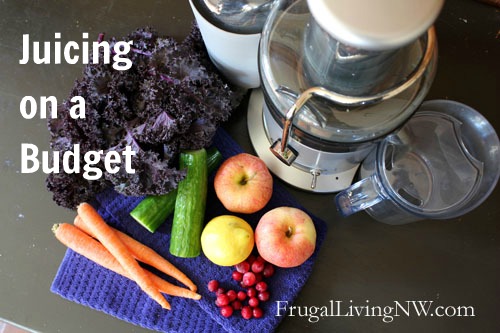
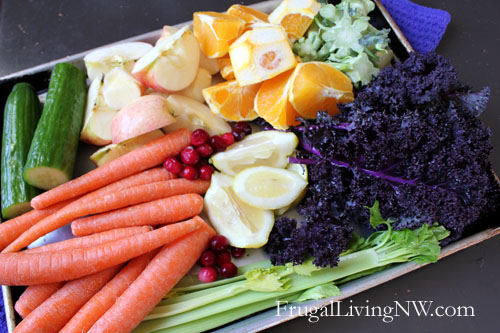
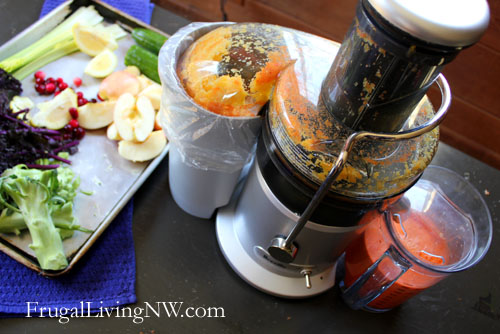
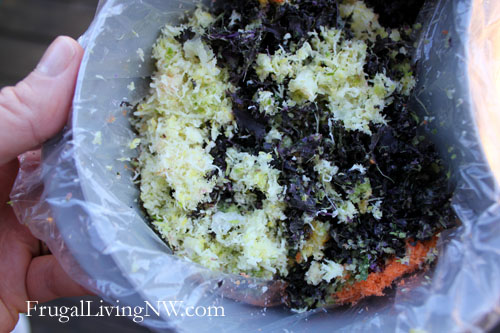
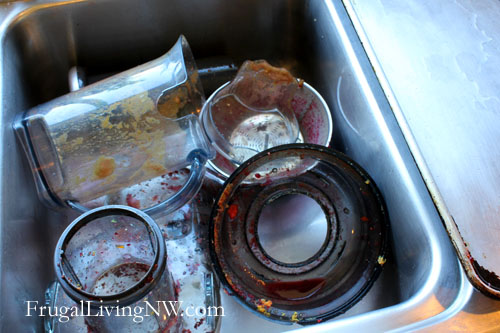
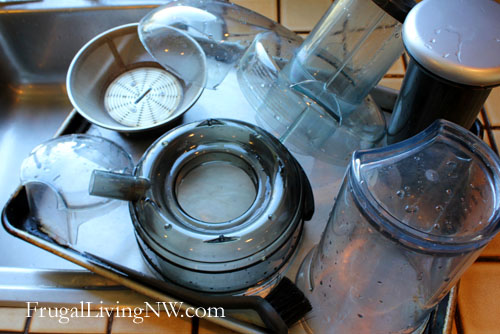

I am really impressed with your writing skills and also with
the layout on your blog. Is this a paid theme
or did you modify it yourself? Either way keep up the nice
quality writing, it is rare to see a nice blog
like this one today.
Hi there friends, nice post and fastidious urging commented at this place, I am actually
enjoying by these.
This is my first time go to see at here and i am really happy
to read all at single place.
Aw, this was a very nice post. Taking a few minutes and actual effort to generate a good article… but what can I say… I put things off a whole lot and don’t seem to get nearly anything done.
Hello There. I found your blog using msn. This is a really well
written article. I will be sure to bookmark it
and return to read more of your useful info. Thanks for the post.
I will certainly comeback.
Hi there! This post couldn’t be written any better!
Reading this post reminds me of my old room mate! He always kept talking about this.
I will forward this page to him. Fairly certain he will have a good read.
Thank you for sharing!
What a material of un-ambiguity and preserveness of precious familiarity about unexpected feelings.
I’d like to find out more? I’d want to find out some additional information.
I think that is one of the most vital information for me.
And i am happy studying your article. However should commentary on few common issues, The site style is wonderful,
the articles is actually excellent : D. Just right job, cheers
WOW just what I was searching for. Came here by searching for site
Hello, I enjoy reading through your article post.
I like to write a little comment to support
you.
I have been exploring for a little bit for any high quality articles or weblog posts in this sort of
space . Exploring in Yahoo I finally stumbled upon this
website. Reading this information So i’m happy
to express that I have a very excellent uncanny
feeling I discovered exactly what I needed. I most definitely
will make sure to don?t overlook this site and give it a look regularly.
Hi everyone, it’s my first visit at this web page, and piece of writing
is in fact fruitful for me, keep up posting such articles or reviews.
Hello! Do you use Twitter? I’d like to follow
you if that would be ok. I’m absolutely enjoying your blog and look forward
to new updates.
Great goods from you, man. I’ve take into accout your
stuff prior to and you are just too fantastic.
I really like what you have obtained right here, really like what you’re
stating and the way in which in which you say it.
You make it entertaining and you continue to care for to stay it sensible.
I can not wait to read far more from you. That is actually a wonderful website.
Write more, thats all I have to say. Literally, it seems
as though you relied on the video to make your point.
You definitely know what youre talking about, why waste your
intelligence on just posting videos to your weblog when you could be giving us something enlightening to read?
It’s truly very difficult in this full of activity life to listen news on Television, thus I just use
the web for that reason, and obtain the most up-to-date information.
It’s in fact very complicated in this busy life to listen news on TV, therefore I just use internet for that reason, and get the latest
information.
Spot on with this write-up, I really feel this website needs much more
attention. I’ll probably be returning to see more, thanks for the information!
This post will assist the internet users for building up new
web site or even a weblog from start to end.
Very shortly this web page will be famous among all
blog people, due to it’s pleasant posts
This post will help the internet viewers for building
up new web site or even a weblog from start to end.
I have to thank you for the efforts you have put in penning this
blog. I really hope to check out the same high-grade blog posts from you later on as well.
In truth, your creative writing abilities has encouraged me to get my
own blog now
Pretty section of content. I just stumbled upon your website and
in accession capital to assert that I acquire actually enjoyed account your blog posts.
Anyway I will be subscribing to your feeds and even I achievement you access consistently
rapidly.
Howdy this is kinda of off topic but I was wondering if blogs use
WYSIWYG editors or if you have to manually code with HTML.
I’m starting a blog soon but have no coding know-how so I wanted to get advice
from someone with experience. Any help would be enormously
appreciated!
Heya i’m for the first time here. I came across this board and I find It truly
useful & it helped me out a lot. I hope to give something back and help others like you aided me.
Great items from you, man. I’ve remember your stuff
prior to and you’re simply too magnificent. I really like what you have obtained right here, certainly like
what you are saying and the best way through which you say it.
You are making it enjoyable and you still care for to stay it sensible.
I cant wait to learn much more from you. This is actually
a tremendous website.
I was very happy to uncover this great site. I need
to to thank you for ones time due to this fantastic read!!
I definitely liked every part of it and i also have you book-marked to see new things in your site.
I am regular reader, how are you everybody? This article posted at this website is really
fastidious.
Amazing! Its really remarkable article, I have got much clear idea concerning from this article.
Ahaa, its nice conversation on the topic of this piece of writing here at this weblog, I have read all that, so at this time me also commenting here.
Because the admin of this web site is working, no hesitation very shortly it will be
famous, due to its quality contents.
With havin so much content and articles do you ever run into any problems of plagorism or copyright infringement?
My site has a lot of completely unique content I’ve either authored myself or outsourced
but it seems a lot of it is popping it up all over the web without my agreement.
Do you know any ways to help protect against content
from being stolen? I’d really appreciate it.
Appreciate this post. Let me try it out.
This is very attention-grabbing, You are an overly professional blogger.
I have joined your rss feed and look ahead to in quest of
more of your great post. Additionally, I’ve shared your web site in my social networks
Useful information. Lucky me I found your website accidentally, and I’m stunned why this coincidence did not happened in advance!
I bookmarked it.
Wow, wonderful blog layout! How long have you been blogging for?
you made blogging look easy. The overall look of your
web site is excellent, as well as the content!
Thanks for sharing your info. I really appreciate
your efforts and I am waiting for your further post thank you once again.
What a stuff of un-ambiguity and preserveness of valuable familiarity on the topic of unexpected feelings.
Can you tell us more about this? I’d like to find out some additional information.
This excellent website certainly has all of the information I wanted about this subject and didn’t know who to ask.
In fact no matter if someone doesn’t know then its up to other visitors that they
will help, so here it takes place.
Hello There. I found your blog using msn. This is
a very well written article. I’ll make sure to bookmark
it and come back to read more of your useful info.
Thanks for the post. I’ll definitely comeback.
Very quickly this web page will be famous among all blogging people, due to
it’s fastidious articles or reviews
I’m more than happy to discover this site.
I wanted to thank you for ones time for this particularly fantastic read!!
I definitely enjoyed every bit of it and I have
you book-marked to check out new stuff in your site.
I am really inspired along with your writing abilities and also with the structure on your weblog.
Is that this a paid theme or did you customize it yourself?
Either way stay up the nice high quality writing, it’s
rare to look a great weblog like this one these
days..